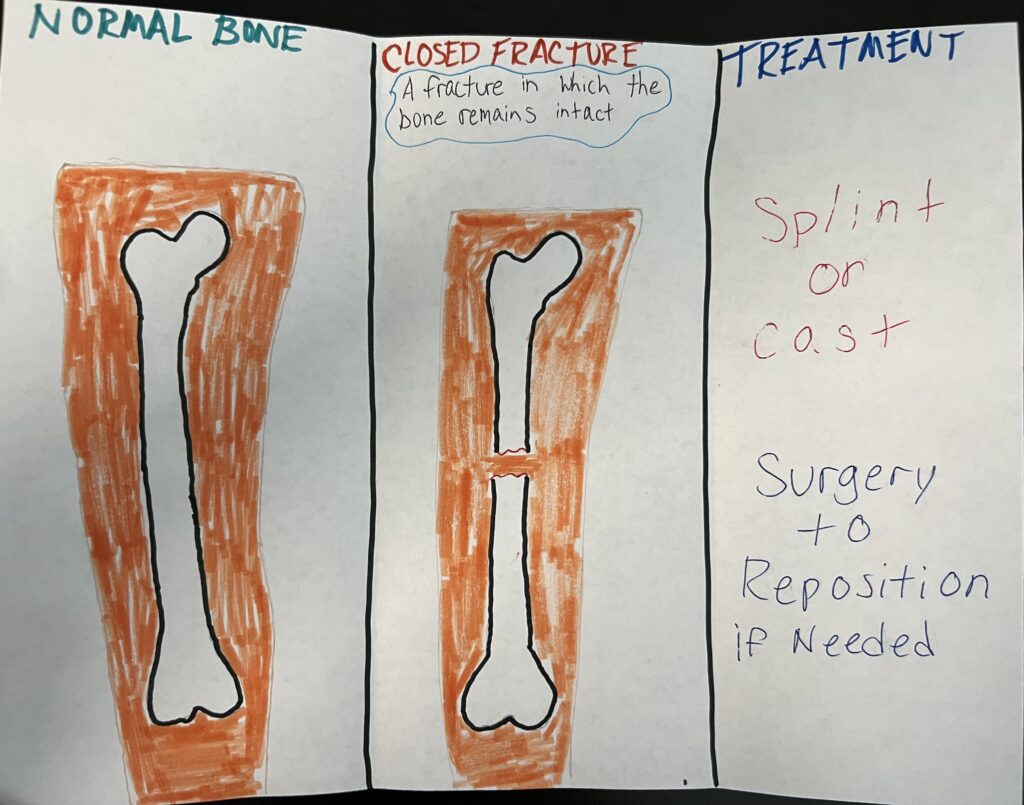
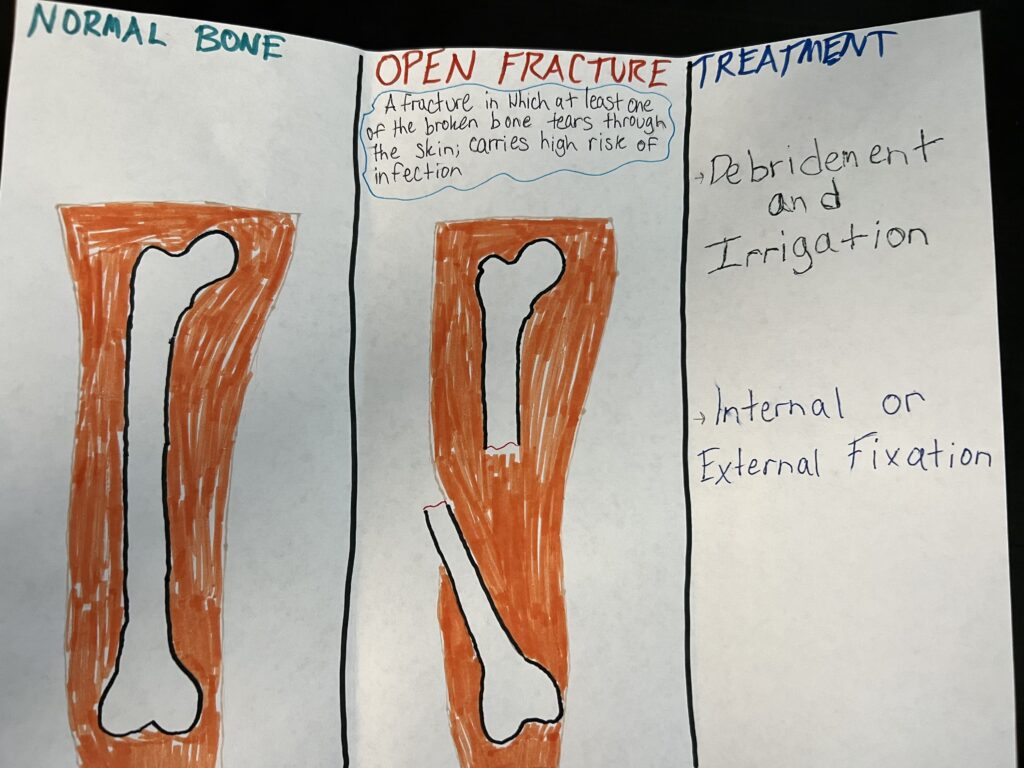
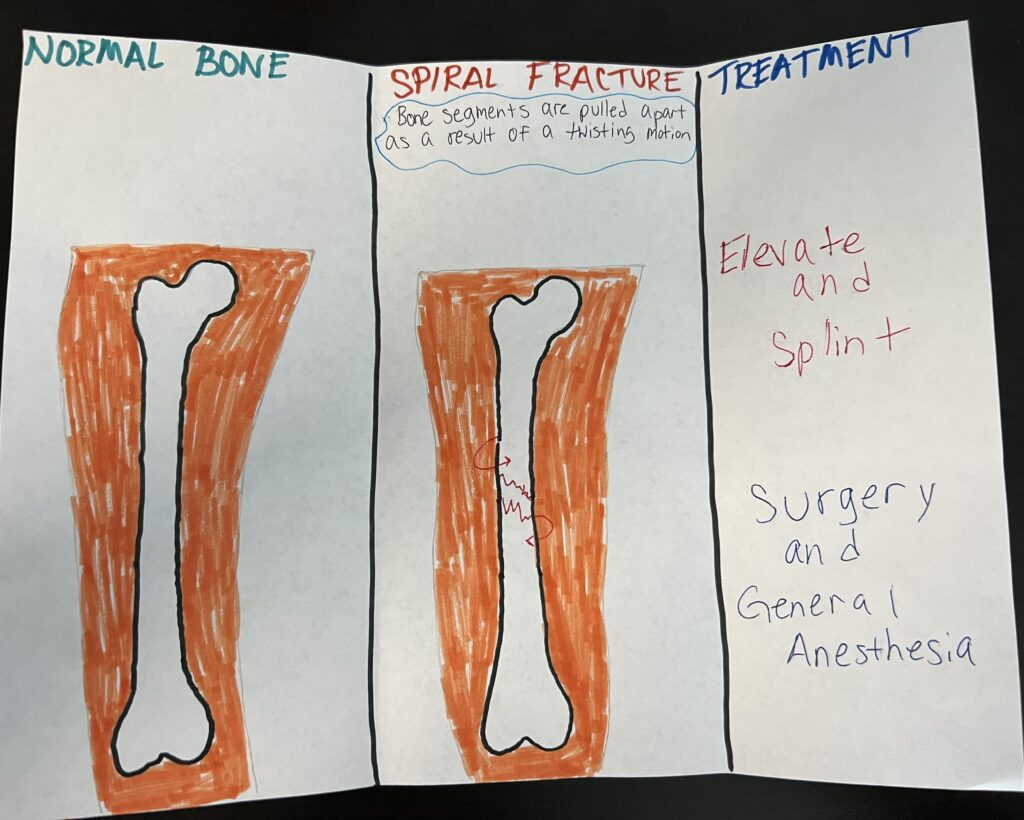

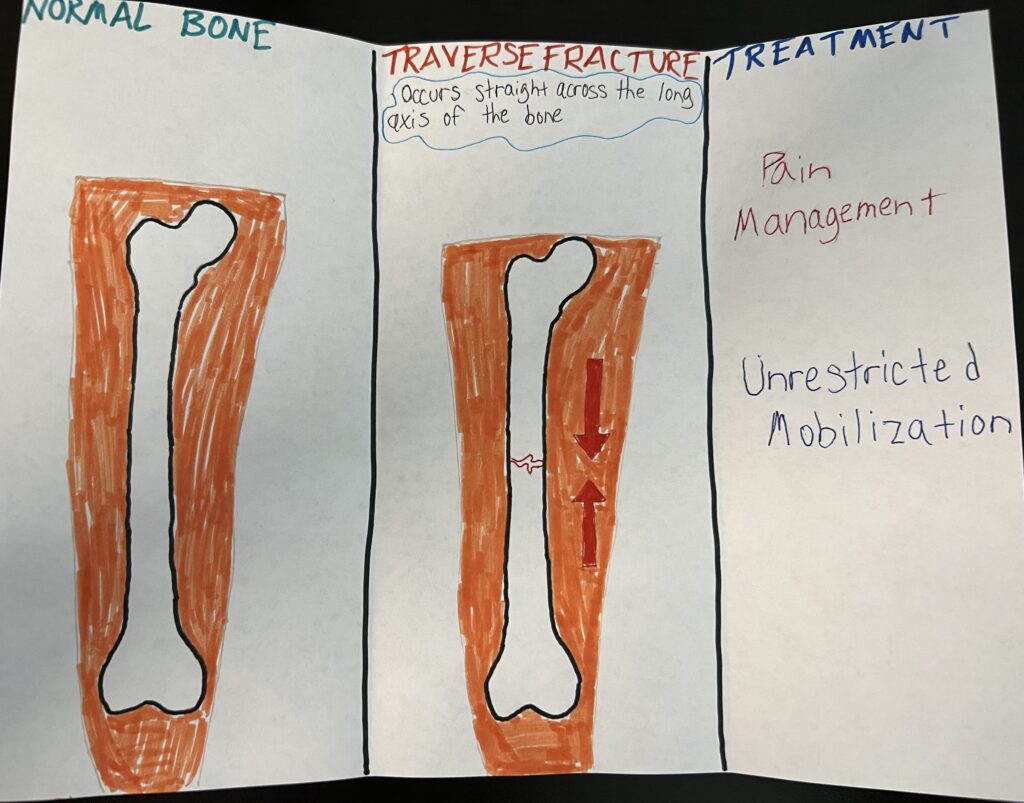
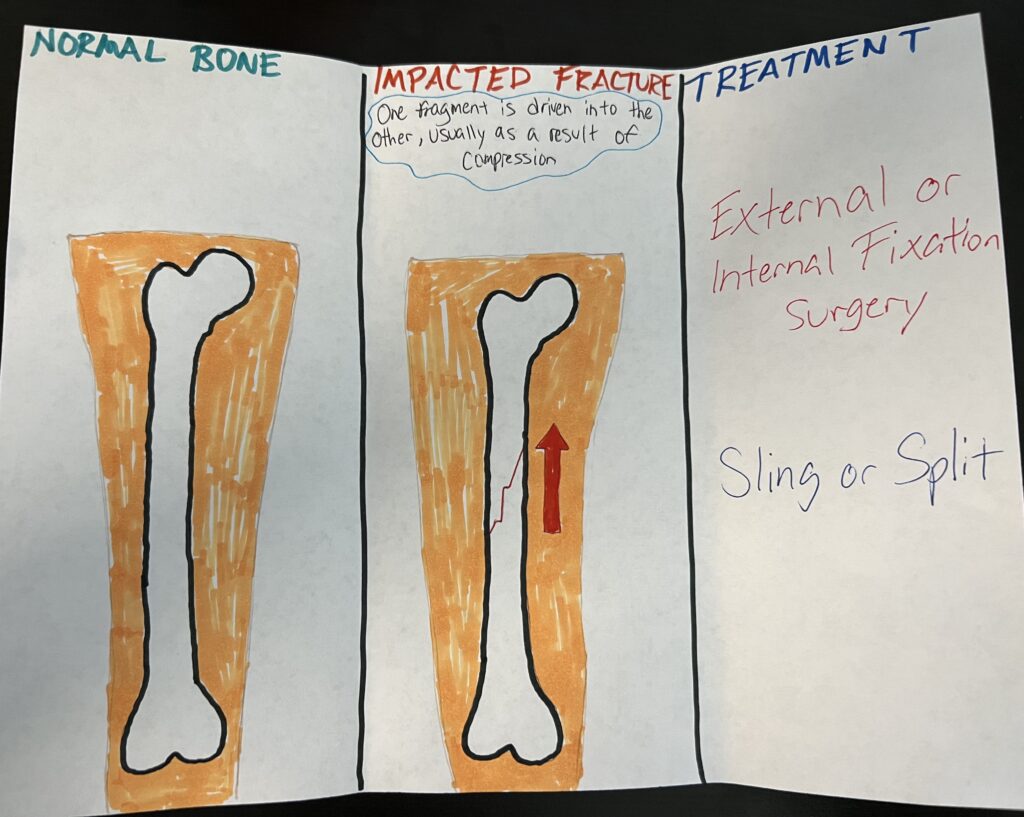
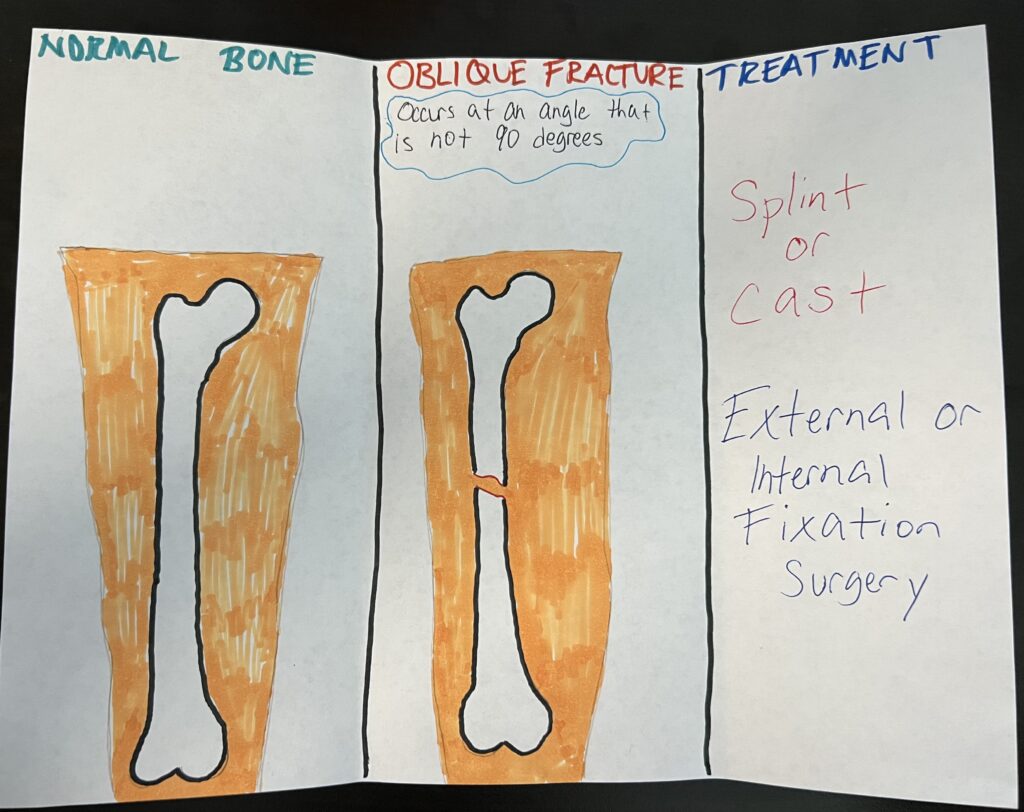
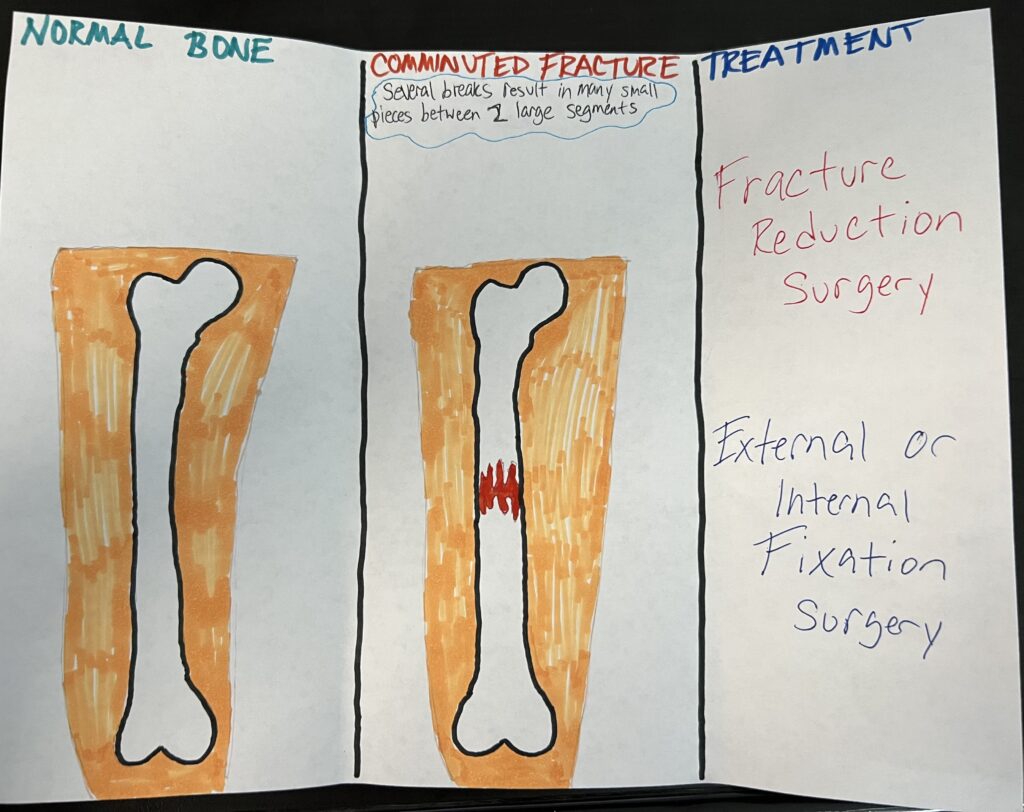

My project objective covers the similarities that gum disease and diabetes have in common. Gum disease and diabetes have been a duo that have had many researchers questioning and developing new information for years.
Compare and contrast the organelles of compact bone The STEAM project represents 3D art and craft techniques combined with paintings and drawings of the organelles of the Compact bone tissue also called the Cortical bone. To further elaborate, the organelles are labeled for easy identification by viewers of this project. …
Alzheimer’s runs in my family and since I could possibly get it when I grow older I would like to learn as much as can about the disease. For this reason, I chose to cover the unit objective “explain how neurons carry an electrical charge” Alzheimer’s is very interconnected with …
Scleroderma is an autoimmune connective tissue that causes inflammation in the skin, blood vessels and can damage other areas of the body. There are a number of conditions that can cause scleroderma, such as rheumatoid arthritis, lupus, or Sjogren’s syndrome. It commonly affects the skin, making it hard and tight, but it can also affect organs. In my research, I found little information about why scleroderma occurs; the common theories are that it results from autoimmunity, genetics, and environmental factors. Although it is rarely ever found when not associated with certain autoimmune diseases. Scleroderma can be mild to severe. A milder form of this disease affects the skin and blood vessels due to the abnormal growth of connective tissue. This is called localized scleroderma. Resulting in the immune system malfunctioning, causing the fibroblasts it contains to produce too much collagen in the lungs, kidneys, and skin. The immune system does this because it thinks the tissues are damaged and is trying to repair them with lymphocytes. The lymphocyte is a white blood cell that contains killer cells, T-cells, and B-cells; it attacks the tissues activating apoptosis, the death of cells.
Connective tissue is made up of five significant cells: fibroblasts, mast cells, plasma cells, macrophages, adipocytes, and leukocytes. When the activated T-cells and the macrophages become infiltrated, the mast cells are degranulated in the skin. Directly correlating with the malfunctioning of connective tissue that begins to break down, thus causing it to thicken. Collagen takes up 65-80% of the dry weight of the tendons. When it starts to be overproduced, the tendons’ structure starts to change. The change in the tendons starts to affect the connective tissues, which then become inflamed, and the skin becomes tight and damaged. The connective tissue supports and protects other tissues and organs; because of this, people with scleroderma often have swollen blood vessels, rashes, and joint pain; in the worst cases, the organs can be affected.
Scleroderma affects women far more than men. These women are often between the ages of 30-50 and, more commonly, women of color. African-Americans develop scleroderma earlier than other races, and when they do develop scleroderma, it is often very severe and affects the organs, most commonly the lungs and heart, and can even cause lung disease. Scleroderma is separated into two groups, localized and systematic. Localized scleroderma appears either linear, where it is a thick scar-like line running along the body, most often on the face or legs, or morphea, which presents in patches on the skin, and in some cases, it appears as both. Systematic scleroderma can be a limited cutaneous scleroderma, which gradually affects the fingers, face, hands, lower arms, and legs below the knees. The other kind is diffuse cutaneous scleroderma, which spreads quickly, starting at the fingers and toes, then spreading to the upper arms and thighs. Diffuse cutaneous scleroderma is often the type associated with organ damage. The build-up of the connective tissue and collagen causes scleroderma to look like a rash-type scar, stretching and pulling on the skin.
References
Mayo Clinic. (2019). Scleroderma – Symptoms and causes. Mayo Clinic. https://www.mayoclinic.org/diseases-conditions/scleroderma/symptoms-causes/syc-20351952
Hou, W. (2011). Scleroderma. https://doi.org/10.1016/b978-0-443-06974-1.00014-2
Nancy Garrick, D. D. (2017, April 12). Scleroderma. National Institute of Arthritis and Musculoskeletal and Skin Diseases. https://www.niams.nih.gov/health-topics/scleroderma#:~:text=Scleroderma%20is%20an%20autoimmune%20connective
Takahashi, T., Asano, Y., Sugawara, K., Yamashita, T., Nakamura, K., Ryosuke Saigusa, Ichimura, Y., Toyama, T., Taniguchi, T., Kaname Akamata, Noda, S., Yoshizaki, A., Tsuruta, D., Trojanowska, M., & Sato, S. (2017). Epithelial Fli1 deficiency drives systemic autoimmunity and fibrosis: Possible roles in scleroderma. 214(4), 1129–1151. https://doi.org/10.1084/jem.20160247
In my photos below, I decided to use makeup to show what scleroderma looks like on the surface of the skin. I had tried to make my hand appear swollen, but it did not turn out well, so I decided not to use those photos.
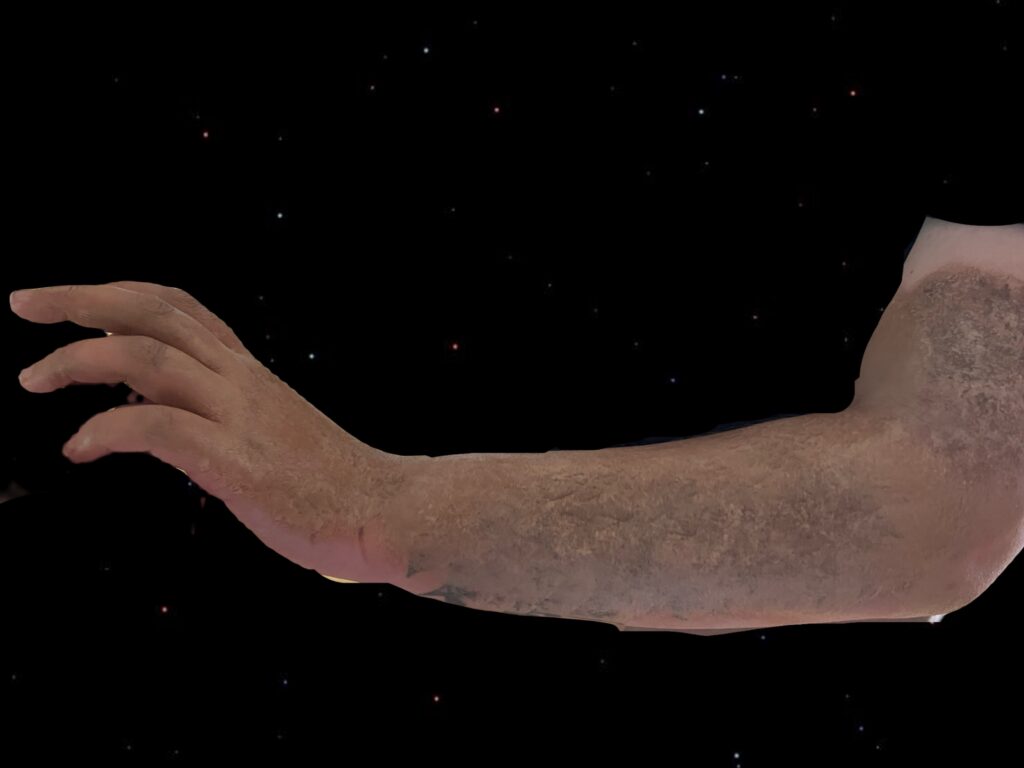
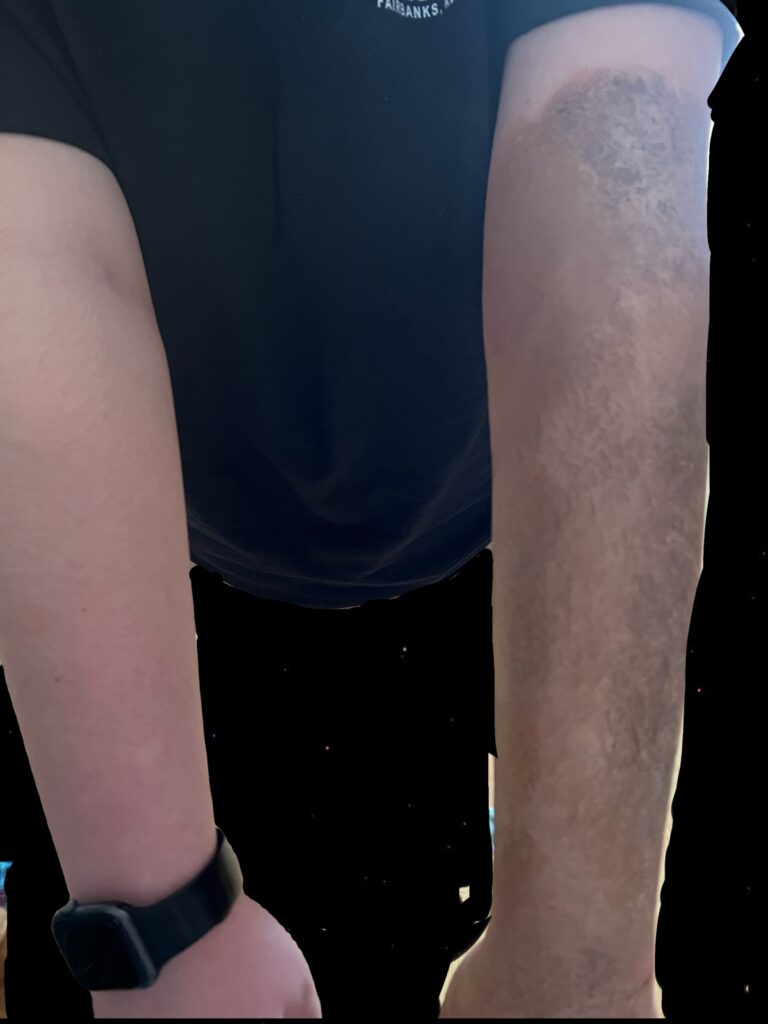
Many members of my family participate in hockey, wrestling, and martial arts. Plus, numerous other intensely competitive sports. I have witnessed practically all of my family members either in a cast or splint or through surgery for a fracture requiring pins or rods. Growing up, I understood that bones self-healed …
The course objective I focused on was the progressive impact of aging on tissue. I chose to research arthritis of the thumb, also known as the CMC joint arthritis. My project walks you through the various steps from defining what it is, to the symptoms, causes, explain who is at risk of developing it, when you should see a doctor, and what happens during the doctor’s office visit. I also briefly explain the treatments available for this type of arthritis such as non-surgical, intermittent out of office procedure, and surgical. I chose to use the comic strip art to walk the reader through a fun and easy model to get a better understanding of arthritis of the thumb.
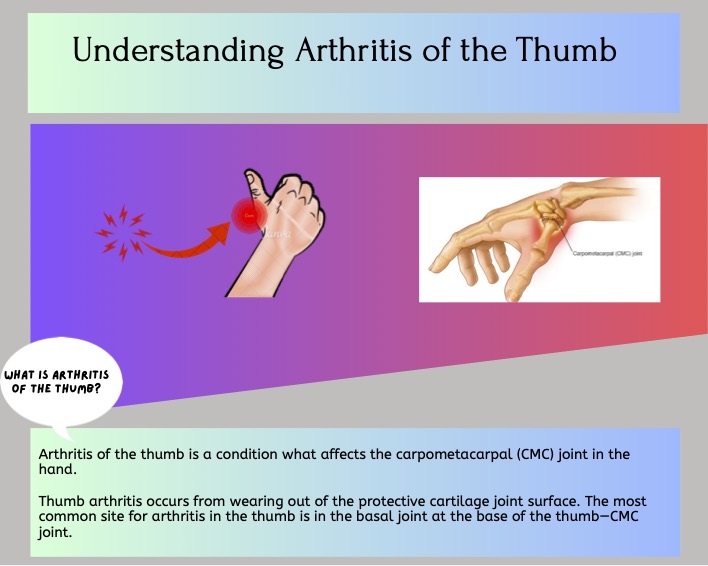

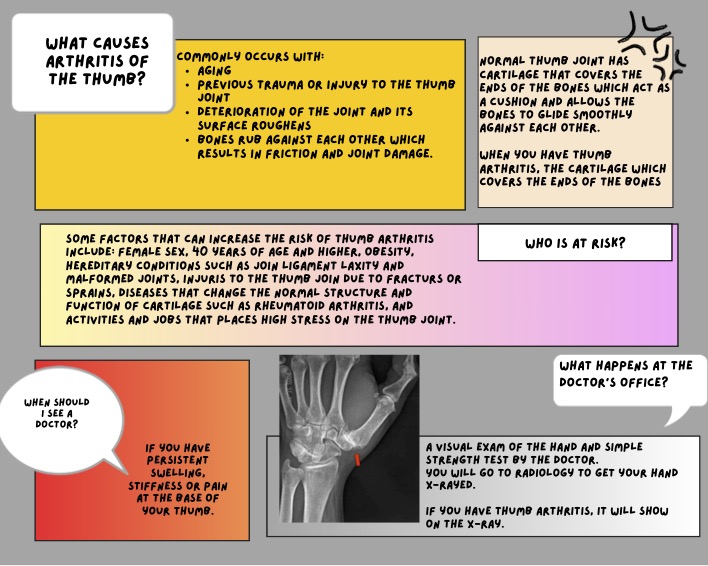
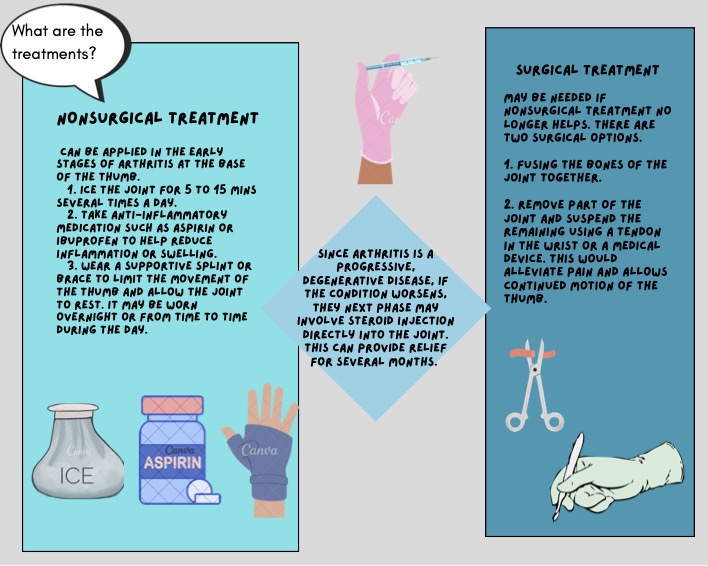
I chose the objective “Explain the role of the lymphatic system in the immune response”. In the autoimmune disorder, Rheumatoid Arthritis (RA) the immune system malfunctions and identifies healthy immune tissue as a threat and begins an immune response that eventually trickles into the dysfunction and damages the lymphatic system.
Stellen Johnson 4/20/23 The Unit Objective that I chose to cover is “describe the function of electrolytes and solutes and their digestion.” For my project, I decided to research alcohol’s effects on the kidneys. I chose to represent the detrimental effects that alcohol can have on a healthy kidney by …
My objective for the STEAM project is to describe placental formation and function, specifically on the topic of placenta previa. The media is water-based markers and colored pencil on paper. It depicts a fetus sitting on top of the placenta which is placed on top of the vaginal canal. Normally, …